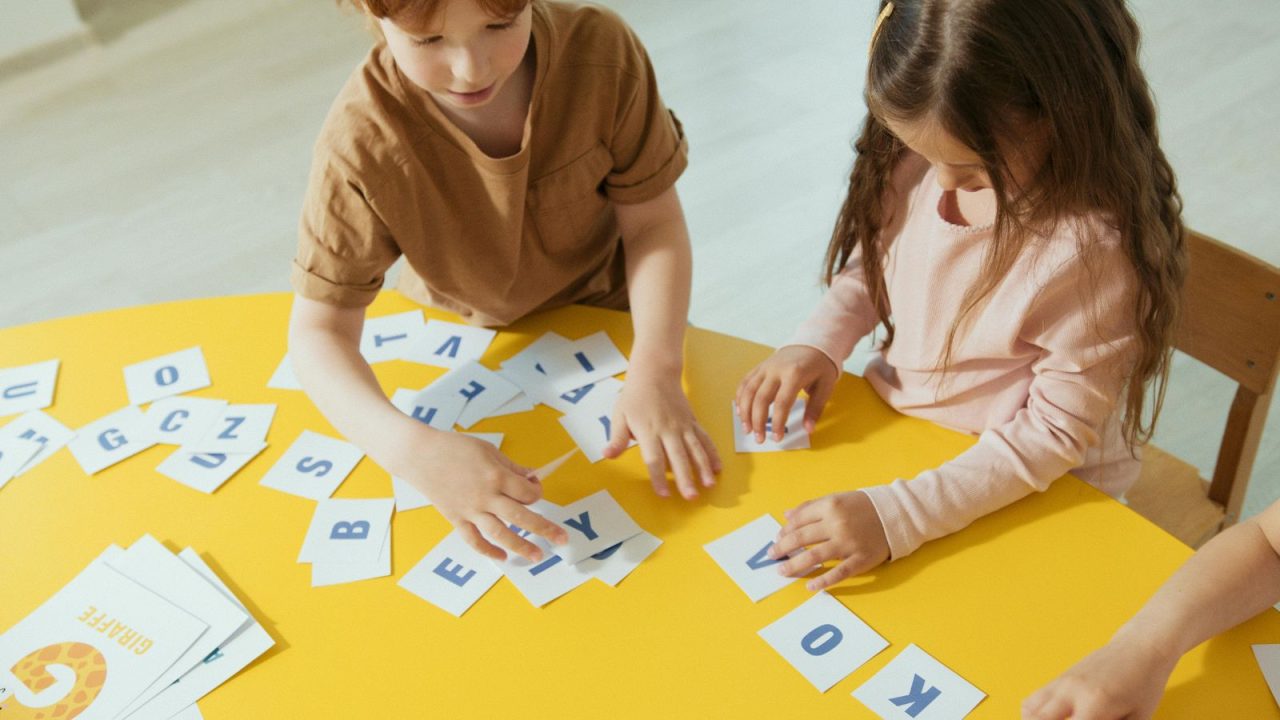Every homeschool parent knows the feeling: you’ve invested in a solid curriculum, but there are still gaps. Maybe your third grader needs extra practice with money concepts, your struggling reader requires more phonics work, or your science lessons could use hands-on activities to bring concepts to life. This is where strategic supplementation becomes essential to a successful elementary homeschool experience.
Teachers Pay Teachers (TPT) offers a treasure trove of free resources created by experienced educators that can strategically enhance your homeschool curriculum without stretching your budget. The key is knowing which resources are truly worth your time and how to integrate them purposefully into your existing program.
In this guide, we’ve curated 25 exceptional free TPT resources specifically for elementary homeschoolers.
This collection isn’t meant to be a comprehensive “solves everything” homeschool kit. Instead, it’s curated to demonstrate the types of free resources available on TPT and how to think strategically about using them. Each example shows how thoughtful supplementation can address common curriculum gaps. As you explore TPT yourself, apply these same strategic principles to find resources that address your specific family’s needs beyond what we’ve highlighted here.
Whether you need to strengthen your math program, add variety to language arts, introduce engaging hands-on science activities, or provide visual support for organization and behavior, these resources can transform your homeschool from good to exceptional without costing a penny. Because free is good, and free is great.

Let’s explore how to strategically supplement your elementary homeschool curriculum with these outstanding free Teachers Pay Teachers resources!
Mathematics Resources
1. Free Money Worksheets – Counting Coins Activities
An 8-page packet of money worksheets perfect for 1st to 3rd grade students to practice identifying coins, counting money, and more.
Supplement Strategy: Most math curricula introduce money concepts but don’t provide enough practice opportunities. Use these 8 pages as your “Money Monday” activity for 2 months, giving consistent weekly practice that builds confidence with coin identification and counting. Perfect for reinforcing skills between formal money lessons in your core curriculum.
2. Touch + Count Money Worksheets
Three worksheets and an anchor chart that make counting coins concrete and visual using the touch money teaching technique.
Supplement Strategy: For visual and tactile learners who struggle with abstract money concepts, this resource introduces the “touch money” strategy that many core curricula don’t include. Use alongside real coins for a multi-sensory approach when your child needs an alternative method to understand coin values.
3. 100 and 120 Chart Printables
Eight printable charts including blank and filled 100 charts and 120 charts that are perfect for helping students learn number patterns.
Supplement Strategy: Keep these charts in a sheet protector as a reference tool during all math lessons. The blank versions can be used for weekly number pattern activities—highlight counting by 2s, 5s, or 10s with different colored markers—providing consistent practice that many curricula assume but don’t explicitly include.
4. Addition and Subtraction with Color-By-Number
Four engaging worksheets that combine math practice with coloring activities. This activity is meant for pre-k through first grade.
Supplement Strategy: Use these as “math rescue” activities when your child is resistant to regular worksheets or needs a brain break while still practicing skills. Also perfect for reinforcing math facts on light school days or as morning work while you prepare other lessons.
5. Counting Money Worksheets
Leveled worksheets for identifying coins, comparing values, counting bills and coins with helpful prompts. (Side observation here: There are a lot of great resources on counting money. Makes sense. You wouldn’t want your kid to end up like Patrick Star and hate counting.)

Supplement Strategy: These worksheets include real-world scenarios that many curricula lack. Use them after completing your curriculum’s money chapter to apply skills in practical contexts like shopping and making change—bridging the gap between academic learning and real-life application.
Reading & Language Arts
6. First Grade Reading Comprehension Packet Sample
Four free pages from a comprehensive reading packet with passages and questions designed for early readers.
Supplement Strategy: Most reading curricula focus on skills but lack enough diverse practice texts. Use these passages weekly as independent reading assessments to monitor progress, or as lesson warm-ups before diving into your regular reading curriculum.
7. Blends and Digraphs Worksheets
Activities for practicing beginning sounds, word identification, and cut & paste sorts to strengthen phonics skills.
Supplement Strategy: When your phonics curriculum moves too quickly through blends and digraphs, use these sheets as targeted reinforcement. Create a “Phonics Fix-It” folder with these worksheets to pull out whenever you notice your child struggling with specific sound combinations.
8. Grammar Mini-Lessons
Grammar lesson pack covering basic parts of speech.
Supplement Strategy: Somelanguage arts curricula introduce grammar concepts too quickly or without enough examples . . . or not at all! Da-da-da-daaa!!! (Lightning crashes in the background, violins screech.)

Use these targeted mini-lessons as supplements when your child needs additional explanation or practice with specific grammar concepts, creating a “Grammar Toolkit” binder to pull from as needed.
9. A-Z Handwriting Practice Sheets
Complete alphabet practice sheets that can be used with dry erase markers when placed in sleeve protectors.
Supplement Strategy: Many curricula assume handwriting will naturally improve with use. Create a dedicated handwriting practice station with these sheets in sleeve protectors and dry-erase markers for 5-minute daily practice sessions that complement your regular language arts lessons.
10. Rhyming Worksheet
A rhyming worksheet with pictures for Preschool and Kindergarten students.
Supplement Strategy: Phonological awareness is a foundational skill that many reading curricula assume rather than explicitly teach. Use this engaging picture-based rhyming activity during morning work or as a warm-up before reading lessons. Perfect for pre-readers who need to develop sound discrimination skills before tackling phonics.
11. Reading Comprehension Graphic Organizer
A 2-page graphic organizer to help practice reading comprehension skills.
Supplement Strategy: Transform passive reading into active analysis with these visual tools that many curricula don’t include. Use these organizers to guide discussions about story elements, character development, and plot structure, helping children visualize abstract literary concepts and deepen their comprehension skills.
Social Studies
12. US Regions Assessment
A simple assessment to test students’ knowledge of the location of the 5 US regions, complete with answer key.
Supplement Strategy: Geography is often woven into social studies curricula but rarely assessed specifically. Use this as a pre-test before studying U.S. regions and later as a post-test to measure knowledge retention, providing concrete evidence of learning that many homeschool curricula don’t include.
13. Thomas Jefferson Biography Research Project
A complete project packet including a title page, research sheet, timeline, and differentiated report pages.
Supplement Strategy: Transform passive history learning into active research with this project that can replace a standard textbook chapter. Use this framework to create similar projects for other historical figures in your curriculum, teaching research skills while deepening historical knowledge.
14. Chinese New Year Information Packet
10 pages of information about this important cultural celebration, its traditions, and customs.
Supplement Strategy: Create a “Cultural Celebrations” unit by collecting similar resources for different cultures, using this packet as your February focus during the actual Chinese New Year celebration.
Science and Hands-on Learning
15. Plant Life Cycle Observation Journal
Document the growth of a plant with this journal!
Supplement Strategy: Many science curricula explain life cycles conceptually but lack hands-on observation components. Use this journal alongside a simple bean growing experiment to document growth stages, teaching both scientific concepts and observation skills. Perfect for supplementing textbook learning with experiential activities.
16. States of Matter Sort
Supplement Strategy: Reinforce your curriculum’s physical science lessons with this concrete classification activity. Use as a pre-assessment before starting your matter unit, then again as a post-assessment to demonstrate learning. The sorting format makes abstract concepts tangible for hands-on learners who might struggle with textbook definitions.
17. Simple Machines Scavenger Hunt
A fun way to introduce your children to simple machine vocabulary.
Supplement Strategy: Take your physical science curriculum beyond the textbook with this real-world application activity. After learning about simple machines, use this scavenger hunt to identify these mechanical principles in your home and neighborhood, connecting abstract scientific concepts to everyday objects
18. Weather Tracking Calendar
Note: You’ll need Google Drive for this one.
Supplement Strategy: Earth science comes alive when students track actual weather patterns. Use this calendar alongside your curriculum’s weather unit to collect data daily, then analyze patterns at the end of each month. This adds a practical, observational element to theoretical weather concepts.
Christian Resources
19. Printable Bible Memory Cards
Memory cards for multiple purposes! This one’s also great in particular for classical home schools.
Supplement Strategy: Integrate scripture memorization into your daily routine with these printable verse cards. Start each school day by introducing a new verse or reviewing previously learned ones. Create a verse box where completed cards are stored, reviewing the collection weekly to reinforce memorization and application.
20. Christian Emergent Reader for Earth Day
A non-denominational reader that teaches about Creation.
Supplement Strategy: Combine early reading skills with creation teaching using this hands-on booklet. As your child builds this emergent reader by unscrambling letters to spell “God” on each page, they’ll connect the joy of reading achievement with the wonder of creation. Use during both your language arts and Bible time to reinforce both literacy and faith concepts.
21. Printable Bible Study Journal
Includes a cover and a page for each Bible passage read.
Supplement Strategy: Transform daily Bible reading into deeper spiritual engagement with this structured journal. Establish a consistent Bible study routine where children record meaningful verses, lessons learned, and prayer reflections. This practices not only spiritual disciplines but also reading comprehension, summary skills, and thoughtful writing. This is a great way to connect faith development with academic growth.
General Resources
22. Homeschool Calendar and Lesson Planner
An editable resource! Always nice. 🙂
Supplement Strategy: Strengthen your curriculum implementation with these customizable planning templates. Use them to map out weekly lessons, track completed work, or document learning through different subjects. These flexible organizers help maintain consistency while adapting to your family’s unique homeschool approach.
23. Hello Fonts Collection
A huge collection of fonts for creating your own materials.
Supplement Strategy: Enhance curriculum worksheets and create custom materials with these fonts. Use different fonts to code different subjects or activities, helping your child visually differentiate between assignment types.
Assessment Tools
24. Checklists with Flashcards for Assessments and Progress Reports
Easy-to-use checklists for the entire year.
Supplement Strategy: Track developmental progress systematically across multiple early learning domains. Use these colorful checklists with matching flashcards to conduct quarterly assessments, documenting growth in colors, numbers, letters, shapes, phonological awareness, and more. The visual format makes it easy to identify both achievements and areas needing additional support beyond what your curriculum covers.
25. Reading Fluency Tracking Charts
Track students’ words per minute with three different charts covering various reading level ranges.
Supplement Strategy: Supplement Strategy: Many curricula lack concrete ways to track progress. Implement a weekly fluency check using these charts to create visual evidence of reading improvement over time, motivating your child and documenting growth for your records.
Your Elementary Homeschool Toolkit
As we’ve explored these 25 free TPT resources, you’ve likely noticed that effective homeschooling isn’t about finding one perfect curriculum that does it all. Instead, it’s about strategically building a customized educational experience that meets your unique child’s needs.
These free resources serve multiple purposes in your elementary homeschool:
Curriculum Gap-Fillers: Every curriculum has strengths and weaknesses. These resources let you strengthen areas where your core materials might be lacking without investing in an entirely new program.
Learning Style Adapters: When your visual learner struggles with text-heavy lessons or your hands-on learner needs more than worksheets, these resources provide the variety needed to reach every learning style.
The Famous “Rescue Kit”: We all have those homeschool days when nothing seems to work, and your carefully planned lessons fall flat. Having these engaging, ready-to-use resources on hand gives you the flexibility to pivot when necessary, turning potential frustration into productive learning.
Assessment and Progress Trackers: Many homeschool parents worry about measuring progress. These strategic tools help you document growth in concrete ways that standard curriculum assessments might miss.
Confidence Builders: Both for you and your child! These professionally designed resources bring teacher expertise into your homeschool, giving you confidence that you’re providing high-quality education even in subjects where you might not feel like an expert.
Homeschooling isn’t about doing more but doing what matters most for your child’s educational journey.
By thoughtfully incorporating these resources alongside your curriculum, you’re not just being budget-conscious; you’re being an intentional, responsive educator who recognizes that the best homeschool experience is one that’s carefully curated for your specific family.
At The Homeschool Shopper, we’re committed to connecting you with resources that make your homeschool journey more effective, enjoyable, and tailored to your needs. These free TPT gems are just the beginning of how strategic resource selection can transform your homeschool experience.
And if you’d like more free resources, check out these fifty incredibly helpful resources for homeschoolers.
